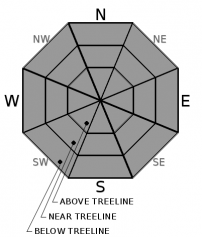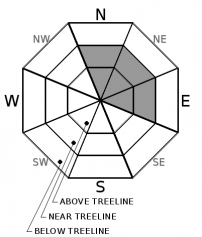| Saturday | Saturday Night | Sunday | |
|---|---|---|---|
| Weather: | Partly cloudy then becoming mostly cloudy. Snow levels 10000 feet. Chance of precipitation is 0%. | Mostly cloudy then becoming clear. Snow levels 9000 feet. Chance of precipitation is 0%. | Sunny. Snow levels 9000 feet. Chance of precipitation is 0%. |
| Temperatures: | 59 to 65 deg. F. | 35 to 40 deg. F. | 57 to 63 deg. F. |
| Mid Slope Winds: | Light winds becoming southwest around 15 mph with gusts to 30 mph in the afternoon. | Southwest around 15 mph in the evening becoming light. Gusts up to 30 mph. | Light winds becoming southwest around 15 mph with gusts to 30 mph in the afternoon. |
| Expected snowfall: | No accumulation. | SWE = none. | No accumulation. | SWE = none. | No accumulation. | SWE = none. |
| Saturday | Saturday Night | Sunday | |
|---|---|---|---|
| Weather: | Partly cloudy then becoming mostly cloudy. Snow levels 10000 feet. Chance of precipitation is 0%. | Mostly cloudy then becoming clear. Snow levels 9000 feet. Chance of precipitation is 0%. | Sunny. Snow levels 9000 feet. Chance of precipitation is 0%. |
| Temperatures: | 52 to 60 deg. F. | 32 to 37 deg. F. | 51 to 57 deg. F. |
| Ridge Top Winds: | Light winds becoming southwest around 15 mph with gusts to 35 mph in the afternoon. | Southwest 15 to 20 mph. Gusts up to 35 mph decreasing to 25 mph after midnight. | Southwest 15 to 20 mph. Gusts up to 25 mph increasing to 35 mph in the afternoon. |
| Expected snowfall: | No accumulation. | SWE = none. | No accumulation. | SWE = none. | No accumulation. | SWE = none. |




















